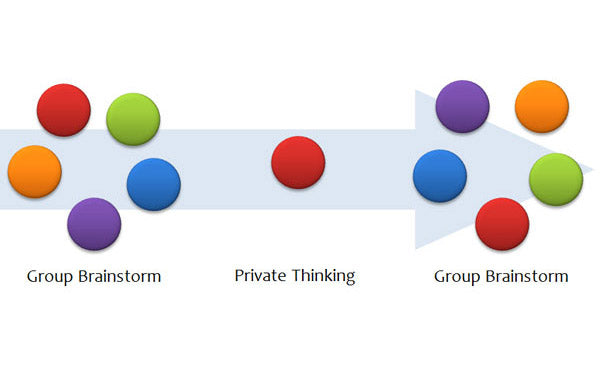Purpose
The following powerful techniques known as Carousel Brainstorming and Graffiti Brainstorming can be used to brainstorm, refresh learners’ minds about a particular topic or to brainstorm on a new concept for new creative ideas. The two types of exercises are structurally the same with only minor execution differences described below.
Objective
Consider each subject stated on a chart and record associations or definitions related to that subject on each sheet.
What You Need
- Paper.
- Carousel brainstorming. Use small A4 sheets.
- Graffiti brainstorming. Use large sheets such as flipchart papers. You need to be able to hang these on walls in way to allow participant to write on them as well.
- Area. For graffiti barnstorming you need to have enough area so everyone can easily move around as they look at the papers hanging on walls.
Setup
- Before the exercise, prepare a number of subjects to use in the brainstorming exercise. These can be questions, statements, subtopics, general issues, etc. Depending on your objective, you may setup the exercise to refresh participants’ minds about a topic or run it as a creativity exercise.
- Divide the delegates to groups of 3 or 4.
- Carousel Brainstorming. Groups remain seated during this exercise.
- Graffiti Brainstorming. Groups walk around looking at various sheets of papers which are hanging on walls during this exercise.
- Assign a particular ID from 1 to N to each group so they form a sequence.
- In Carousel Brainstorming, distribute one sheet to each group. In Graffiti Brainstorming ask each group to go and stand next to a hanging paper.
- Ask groups to consider the statement in their sheet and write related terms, short statements and associations for that topic. Depending on your goal, you can specify what you expect to see. For example:
- Single words
- Short statements
- Definitions
- Graphs and illustrations
- Allocate 30 seconds for groups to quickly write down what comes to their minds about the topic. It is important to run this exercise quickly.
- After the allocated time:
- Carousel Brainstorming. Ask each group to pass their sheet to next group in the cycle based on their group IDs. The last group should pass their sheet to group 1.
- Graffiti Brainstorming. Ask each group to move to the next paper on the wall and continue based on a predetermined sequence.
- Ask groups to consider the statements and associations already identified by other groups and add more if they can think of anything new.
- Allocate 35 seconds for this round.
- Continue with 3 or 4 more rounds each time increasing the time available by 5 seconds since you can expect the groups to struggle to come up with new ideas.
- When you feel there is no more value to gain, stop the exercise. Ask groups to review all sheets and discuss what they have written or learned in this exercise.
Timing
Explaining the Exercise: 5 minutes
Activity: 10 minutes
Group Feedback: 5 minutes
Discussion
Did others spot topics you could not think of? What does this mean about cooperative problem solving? Did it help you to refresh your mind quickly on a particular topic? How useful was this exercise in generating new creative ideas?
Soft Skills Training Materials
Get downloadable training materials
Online Train the Trainer Course:
Core Skills
Learn How to Become the Best Trainer in Your Field
All Tags
Training Resources for You

Course Design Strategy
Available as paperback and ebook

Free Training Resources
Download a free comprehensive training package including training guidelines, soft skills training activities, assessment forms and useful training resources that you can use to enhance your courses.

Our Comprehensive Guide to Body Language

Train the Trainer Resources
Get Insights - Read Guides and Books - Attend Courses
Training Materials
Get downloadable training materials on: Management Training, Personal Development, Interpersonal Development, Human Resources, and Sales & Marketing














Leave a comment
All comments are moderated before being published.
This site is protected by hCaptcha and the hCaptcha Privacy Policy and Terms of Service apply.